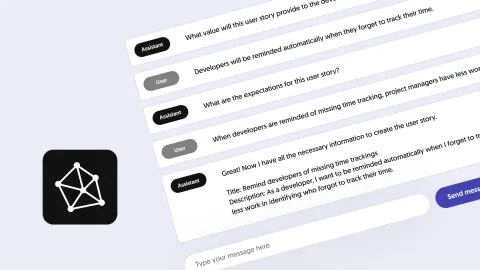Using a MVP approach for web projects

A Minimum Viable Product (MVP) approach is often used in web development when a website or a new feature is being developed with the goal of testing it with real users before investing further resources into it.
There are a lot of benefits of using MVP approach in web development. The approach allows fast time to market and early validation by gathering customer feedback and making adjustments accordingly before moving forward with a full-scale development.
A MVP approach for website projects is appropriate in the following situations:
- When time-to-market is important: MVP allows you to get a website project to market quickly, test it, and then make improvements based on users’ feedback.
- When resources are limited: MVP allows you to develop new functionality with minimal resources and then scale it up as resources become available.
- When the feature for the website is complex: MVP allows you to break it down into smaller and more manageable chunks, develop and test them individually, and gradually develop it into the full version.
- When the feature for the website is not fully validated: MVP allows you to test how the audience interacts with the functionality and allows for adjustments before developing the full version.

How we use the MVP-based approach at 1xINTERNET
You could broadly categorize the projects we implement into the following categories:
- Content management (CMS) solutions
- E-commerce solutions (B2B, B2C)
- Integrated business solutions such as Social Intranet, Digital Asset Management (DAM), Knowledge Management, Marketing Automation etc.
What all the projects have in common is that they address the rather complex business requirements of our clients.
In the conception phase of such projects the requirements that are associated with the expected results are specified as exact as possible. However, for complex use cases this is not easy, and while the projects are developed the requirements become more precise or even change.
A MVP approach to web development helps to accommodate that. In such situations we would always recommend to implement first the minimal necessary set of features, to allow the launch of the project with the least amount of effort and cost. Once we have an MVP version that could go live, we work together with our clients until the best version considering time and budget constraints is reached. Often, this leaves us with a remaining budget that can be used to implement additional features that were not even in the scope of the original proposal.
The result of a successful MVP implementation
This is the safest way for our clients to invest in complex web solutions, and therefore this is our preferred approach.

Examples of using the MVP approach in web projects
When we build e-commerce solutions the most important factor is that clients can start selling as early as possible. Often we start with a beautiful, but simple shop, focus on the main products, and provide simple and intuitive checkout procedures. For large volume webshops we often see in this phase that our clients need better processes or more advanced integrations than originally anticipated to handle orders, availability, and complaints. When the shops run smoothly we add more features like more product types, different checkout flows, order splitting, related products, or personalized product recommendations. For each of these we use a MVP approach. Read about our e-commerce solutions and check out our references.
We often build complex search solutions for our clients. Complexity can stem from large data sets, from integrating multiple data sources, or from advanced user interfaces that are optimized for finding data. A good example is UTBW, a governmental project in which heterogeneous data from multiple sources is combined in an advanced user interface. More examples can be found in the above e-commerce solutions or other web projects. All search solutions have in common that we first developed a working MVP version, and in subsequent iterations built additional functionality such as advanced autocomplete, geospatial search, search with multiple languages, partial word matches, word stemming, map integrations, feedback learning, and so forth. As mentioned above, we always like to follow a MVP approach. Read more about our search solutions.

A last example is multi website / multi brand solutions. For large companies we often consolidate their landscape of websites (different brands, countries, etc.) into a single platform that allows them to manage all their websites centrally. This usually unlocks large cost savings, because common features like
- integration of Customer Identity Access Management (CIAM),
- content workflows and translation,
- beautiful display features, or
- other integrations such as Digital Asset Management (DAM) or Marketing Automation systems
are implemented once and used on all websites. For these scenarios we usually work with multiple stakeholders. When the requirements of multiple stakeholders must be met, it is especially useful to work with a MVP approach, because this allows us to validate the functionality together, before full-scale versions are developed. Read more about our multi-site solutions and the corresponding case studies.
To support our implementation strategy we have created a starter kit for all of the above project types, that contain most of the common functionality. This digital experience platform (DXP) allows us to launch robust MVP versions of such projects with limited effort.
Other highlights
Why choose open source over proprietary software for enterprise projects

We often get asked what open source software is and why companies prefer it over proprietary...
How to create useful AI applications

To create useful AI applications you need to understand how AI works and how it can best be used. In...